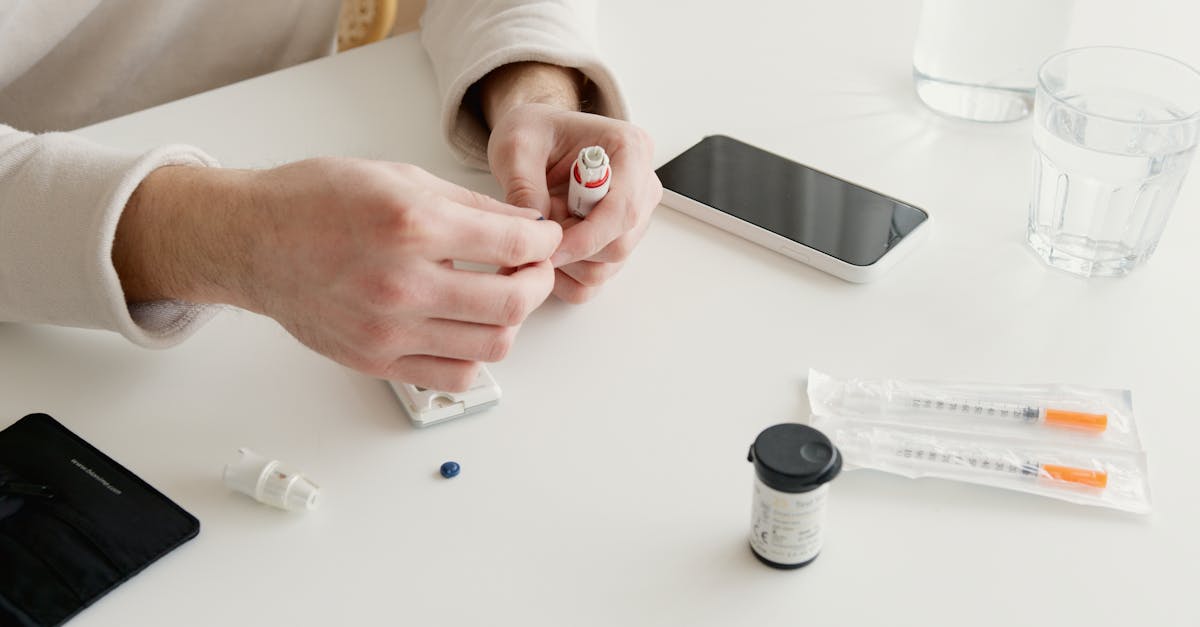The emergence of new protocols monitoring of chronic diseases in general medicine represents a significant advance in patient care. These protocols aim to optimize the treatment, facilitate the follow up and improve support for people suffering from chronic pathologies. Thanks to innovative tools and targeted therapeutic education, doctors can now better meet the specific needs of each patient. The integration of these new methods not only enriches medical practices, but also allows for better collaboration between health professionals, thus strengthening the quality of care provided.

The support of chronic diseases is a major challenge in the field of general medicine. With the increase in life expectancy and changing lifestyles, these pathologies represent a growing share of medical consultations. THE new monitoring protocols are designed to optimize the assessment, treatment and monitoring of patients suffering from chronic diseases, thus guaranteeing optimal quality of care.
Traditional protocols have often been deemed ineffective in the face of the complexity and diversity of patient needs. Thus, new approaches aim to integrate more personalized methods adapted to the specific characteristics of each disease, while taking into account the patient care pathway. This requires a therapeutic education patients so that they can actively participate in their follow-up. The devicestherapeutic patient education (ETP) are growing in importance, giving patients the tools to better manage their own health.
Writing a guide practice and tools for general practitioners is essential to improve the management of chronic diseases. For example, the establishment of a structured care pathway ensures regular and appropriate monitoring, with defined points of contact between the patient and healthcare professionals. These elements are often supplemented by clear information on diagnosis, treatment, and follow-up.”
New monitoring protocols also focus on the use of digital technologies. This includes telemedicine, which is proving to be a valuable asset for monitoring chronic patients. Indeed, this method makes it possible to guarantee regular exchanges between the patient and the doctor, while avoiding unnecessary travel. In this context, several studies have demonstrated the benefits of new telemedicine tools, which allow better monitoring of pathologies and increased responsiveness in the event of complications.
Current protocols also emphasize interdisciplinarity, with reinforced collaboration between general practitioners and specialists. This synergy is crucial to ensure consistent and continuous monitoring of patients. THE cooperation protocols between health professionals, as well as the use of multidisciplinary meetings, make it possible to better understand the different aspects of chronic diseases and to provide an appropriate response.
At the same time, the epidemiological context and the evolution of practices must be taken into account when developing new protocols. For example, feedback in the management of chronic diseases such as diabetes or high blood pressure has led to the implementation of personalized tracking strategies, based on clinical criteria and precise health indicators. Toolsassessment of care are also created to measure the effectiveness of protocols in use.
As part of the continuous improvement of medical practices, training, in the form of workshops or seminars, is offered to general practitioners to enable them to familiarize themselves with these new protocols and understand the challenges. The objective is to popularize them and ensure uniform application across the territory.
Finally, the development of adapted protocols for different chronic pathologies, whether genetic or acquired, requires the importance of rigorous and targeted monitoring. For example, specific guides have emerged for diseases such as asthma, COPD, or even cardiovascular diseases. Each of these guides is based on the recommendations of the main learned societies and incorporates best practices in monitoring.
In conclusion, the new protocols for monitoring chronic diseases in general medicine are part of a dynamic of continuous improvement of care. They rely on a personalized and multidisciplinary approach, also integrating technological advances and therapeutic education methods. Supporting patients throughout their care journey is fundamental to guarantee optimal quality of life and a better long-term health prognosis.
To deepen your knowledge on these themes, it is also possible to take an interest in new functional rehabilitation techniques, to new laser technologies in ophthalmology, and medtech-revolution-technologique-dans-le-secteur-de-la-sante/”>technological revolution in the health sector, as well as new imaging-guided biopsy techniques which are also transforming medical care.

In the field of general medicine, the management of chronic diseases requires a methodical and adapted approach. The new ones monitoring protocols aim to optimize this management by offering tools and precise recommendations to healthcare professionals. By integrating innovative techniques and evidence-based recommendations, these protocols enable more effective monitoring and better quality of life for patients.
Development of care protocols
The creation of new care protocols is based on an evaluation of existing practices and the specific needs of patients with chronic diseases. Consultation between treating doctors and specialists is essential to establish recommendations adapted to each pathology. It is essential that these protocols include practical guides and adapted tools that allow easy navigation in the patient’s care pathway.
Therapeutic patient education
A fundamental aspect of these new protocols is the integration oftherapeutic patient education (ETP). This approach aims to actively involve the patient in their management of the disease. By providing educational resources and organizing TPE workshops, the doctor helps the patient understand their pathology, available treatments and the importance of regular follow-up. It also promotes better adherence to prescribed treatments, which can significantly improve health outcomes.
Technology and telemedicine
The rise of digital technologies opens up new perspectives for patient monitoring. The new protocols recommend the use of telemedicine to facilitate remote consultations and regular monitoring. Through applications and connected health devices, doctors can receive real-time data on the health status of their patients, allowing them to quickly adapt treatments based on changing symptoms.
Multidisciplinary monitoring
Monitoring chronic diseases often requires a multidisciplinary approach. The new protocols encourage collaboration between different healthcare professionals, such as general practitioners, specialists, nurses and pharmacists. This cooperation ensures complete and coordinated monitoring, thus minimizing the risk of errors and misunderstandings in the patient’s care pathway.
Cooperation protocols
THE cooperation protocols between health professionals, such as those recently updated, make it possible to better structure patient care. These protocols facilitate the sharing of information and responsibilities, ensuring that each actor plays an active role in patient monitoring. It is essential that these protocols are regularly revised to take into account medical advances and feedback from practitioners.
Implementation and evaluation of protocols
The implementation of the new monitoring protocols requires a continuing education health professionals, in order to guarantee their proper understanding and application. Furthermore, a regular assessment of the results obtained must be carried out to ensure the effectiveness of the protocols. Studies must be carried out to constantly adjust and improve these recommendations, incorporating feedback from patients and healthcare professionals.












